How a Commercial Meat Slicer Transforms Your Business
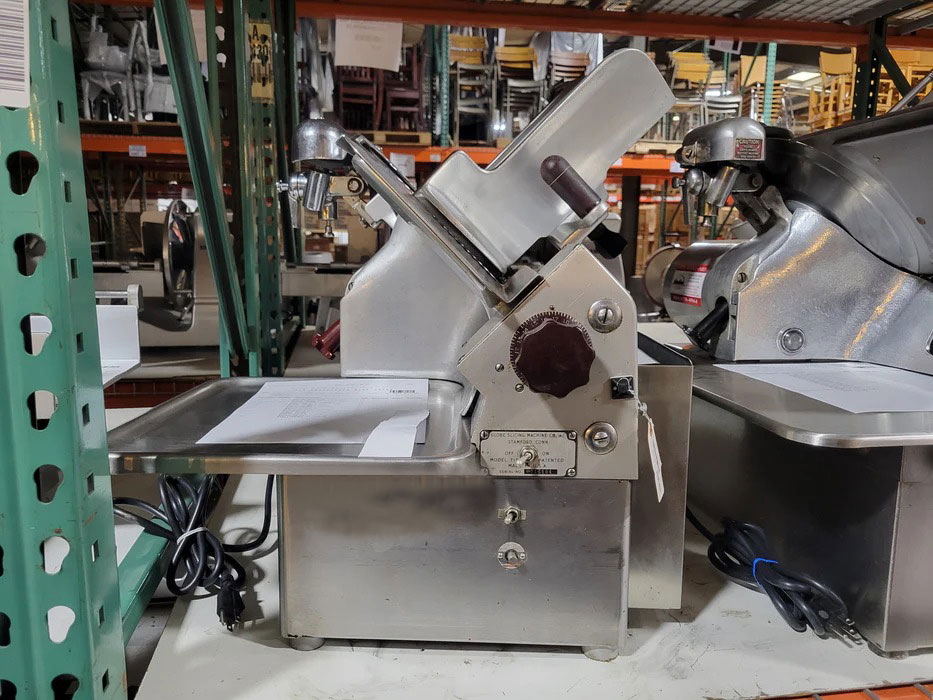
Introduction: What is a Commercial Meat Slicing Machine?
A commercial meat slicing machine is a vital tool used in food processing facilities, supermarkets, delis, and restaurants for cutting meat into uniform slices. These machines are designed to handle various types of meat, including beef, pork, chicken, and cured meats, and are built to meet the demands of high-volume environments. By automating the slicing process, they ensure consistent thickness, enhance efficiency, and reduce labor costs, all while maintaining the highest standards of hygiene and food safety.
Definition and Purpose of a Commercial Meat Slicing Machine
Commercial meat slicing machines are heavy-duty appliances designed to efficiently slice large quantities of meat into precise, uniform portions. Whether it's thin slices for sandwiches or thicker cuts for steaks, these machines are engineered to deliver consistency, speed, and accuracy. Their primary purpose is to speed up meat preparation, allowing businesses to meet consumer demands quickly and efficiently.
Importance of Meat Slicing Machines in the Food Industry
The food industry, particularly in butcher shops, delis, and large-scale meat processing plants, relies heavily on meat slicers. These machines not only save time and labor but also ensure that the meat is cut with consistent thickness and quality. The uniformity of the slices is crucial for both aesthetic appeal and ensuring that the meat cooks evenly, contributing to a superior final product.
How They Contribute to Efficiency and Consistency in Meat Processing
In any high-volume meat processing operation, efficiency and consistency are key. Commercial meat slicing machines streamline the slicing process, enabling businesses to handle large quantities of meat in less time. The machines also reduce the variability in slice thickness, which can be a challenge when slicing by hand. This consistency is essential for delivering a high-quality product to consumers every time.
The Role of Meat Slicing Machines in Food Production
Enhancing Operational Efficiency in High-Volume Environments
One of the standout features of commercial meat slicing machines is their ability to operate at high speeds. This is especially important in environments where large quantities of meat need to be processed quickly, such as in food processing plants and delis. These machines can slice hundreds of pounds of meat per hour, vastly improving productivity and ensuring that businesses can meet demand without sacrificing quality.
Ensuring Consistent Slice Thickness and Quality
Uniformity in slice thickness is not only important for presentation but also for cooking consistency. Commercial meat slicers ensure that every slice is of the same thickness, which helps with portion control and ensures that the meat cooks evenly. This consistency is critical for both restaurant kitchens and packaged meat products.
The Impact of Slicing on Presentation and Consumer Experience
Meat slicing machines also have a significant impact on the presentation of the final product. Whether it's deli meat or premium cuts of beef, uniform slices enhance the visual appeal of meat, which can influence consumer purchasing decisions. In the food industry, how the product looks is just as important as how it tastes.
Types of Commercial Meat Slicing Machines: A Comprehensive Overview
There are several types of commercial meat slicing machines available, each suited to different needs. Understanding these options is crucial in selecting the right machine for your business.
Manual Meat Slicing Machines: The Traditional Option
Manual meat slicers are the traditional choice for smaller operations or businesses that prefer hands-on control. These machines require the operator to adjust the slice thickness manually, making them ideal for smaller batches or specialty cuts of meat. While they require more time and effort, manual slicers are often more affordable and offer greater flexibility.
Semi-Automatic Meat Slicing Machines: Balancing Control and Speed
Semi-automatic slicers provide a middle ground between manual and fully automatic machines. These machines are easy to use, and the operator only needs to load the meat and adjust settings like slice thickness. Semi-automatic slicers are popular in small to medium-sized businesses where consistency is key, but there’s still a need for operator involvement.
Fully Automatic Meat Slicing Machines: Maximizing Efficiency and Output
Fully automatic meat slicers are the most advanced option. These machines can slice large quantities of meat without the need for constant operator intervention. Fully automatic machines are perfect for large-scale operations where speed and volume are paramount, and the need for manual labor is minimized.
Key Features to Look for in a Commercial Meat Slicing Machine
Choosing the right meat slicer is essential for achieving optimal performance. Below are some key features to look for:
Blade Quality and Material: Why It Matters for Clean, Precise Cuts
The blade is the most critical component of a meat slicer. High-quality blades made from stainless steel or other durable materials will not only ensure clean, precise cuts but will also resist wear and corrosion. A sharp blade results in better cuts, preserving the texture and quality of the meat.
Slice Thickness Control: Achieving Uniformity in Every Slice
Slice thickness control is a fundamental feature that allows the operator to adjust the thickness of each slice. Whether you need paper-thin slices for deli meat or thicker cuts for steak, having precise control over the thickness ensures consistency and contributes to overall product quality.
Motor Power and Speed Settings: Adapting to Different Meat Types
A powerful motor is essential for slicing tougher cuts of meat or frozen meats. The motor’s power and speed settings determine how quickly and efficiently the slicer can process different types of meat. Look for machines that offer variable speed settings to ensure versatility in your operation.
Durability and Construction: Ensuring Longevity and Reliability
Commercial meat slicers are heavy-duty machines, and durability is crucial. Machines made from stainless steel or aluminum are both long-lasting and resistant to corrosion, making them ideal for high-volume environments. A well-built slicer will continue to perform reliably, even under heavy use.
Hygiene and Safety Features: Keeping Operators and Consumers Safe
Hygiene and safety are paramount in the food industry. Look for meat slicers with easy-to-clean surfaces, built-in sanitation features, and safety guards to prevent accidents. A machine that prioritizes food safety can help ensure compliance with health regulations and minimize contamination risks.
How Commercial Meat Slicing Machines Work
The Mechanics of Meat Slicing: How the Blades and Motor Interact
At the heart of every meat slicer is its motor and blade mechanism. The motor drives the blade, allowing it to rotate at high speeds. The meat is fed into the blade via a carriage or feed tray, and as the meat is pushed into the blade, it is sliced into the desired thickness.
Different Cutting Mechanisms: Gravity Feed vs. Horizontal Feed
There are different types of feeding mechanisms in meat slicers. Gravity-feed slicers use the natural weight of the meat to guide it into the blade, offering a smooth and consistent slicing action. Horizontal-feed slicers are often more precise and better suited for cutting delicate or hard meats.
The Importance of Blade Sharpening and Maintenance for Optimal Performance
Regular blade maintenance is key to ensuring consistent, quality slices. Over time, blades can dull, which will result in uneven cuts and added strain on the motor. Regular sharpening and cleaning of the blade are necessary to maintain optimal performance and extend the life of the machine.
Benefits of Using a Commercial Meat Slicing Machine
Time Savings: Speeding Up Meat Preparation for Large Operations
Commercial meat slicers can drastically reduce the time spent on meat preparation. In large-scale operations, this efficiency leads to faster product turnover, increased production, and the ability to handle higher volumes with ease.
Consistency and Precision: Why Uniform Slices Matter
Consistent slice thickness is essential for product quality. Uniform slices ensure that the meat cooks evenly, and the product has a polished, professional appearance. This level of precision is difficult to achieve with manual slicing.
Labor Efficiency: Reducing Manual Labor and Human Error
Manual slicing can be labor-intensive and prone to human error. Commercial meat slicers automate the process, reducing the need for extensive labor and minimizing mistakes. This efficiency not only saves time but also reduces the potential for injury.
Cost Savings: Maximizing Output with Less Waste
By cutting meat more precisely and efficiently, slicers reduce waste. Less waste means better use of resources and lower operating costs, which can significantly impact the bottom line for any business.
Choosing the Right Commercial Meat Slicing Machine for Your Business
When selecting a meat slicing machine, it’s important to consider your unique needs.
Understanding Your Needs: High-Volume vs. Smaller Scale Operations
The size and scale of your operation will dictate the type of slicer you need. High-volume businesses will benefit from fully automatic machines, while smaller operations may be better suited to semi-automatic or manual slicers.
Space Considerations: Selecting the Right Size for Your Facility
Before purchasing a meat slicer, consider the space available in your facility. Larger machines may require significant space, while compact models are better suited for small kitchens or limited counter space.
Budgeting: How to Balance Cost with Quality
When buying a commercial meat slicer, it’s important to balance cost with quality. While high-end models offer advanced features and durability, more affordable options can still provide reliable performance for smaller operations.
Brand Reputation: What to Look for in Reliable Manufacturers
Brand reputation matters when purchasing any commercial equipment. Look for manufacturers known for their durability, customer service, and warranties. A trusted brand can help ensure your slicer will continue to operate efficiently for years to come.
Applications of Commercial Meat Slicing Machines
Deli Meat Slicing: Preparing Thin, Even Slices for Sandwiches and Platters
One of the most common uses for meat slicers is in the deli industry. These machines allow businesses to prepare thin, uniform slices of deli meats, which are ideal for sandwiches, platters, and other dishes.
Bacon and Ham Slicing: How These Machines Handle Tougher Cuts
Bacon and ham require specialized slicing to achieve the desired texture and thickness. Commercial slicers designed to handle tougher cuts ensure that these meats are processed efficiently while preserving their quality.
Slicing Frozen or Frozen-Prepped Meats: Adapting to Different Meat Types
Frozen meat can be difficult to slice, but with the right slicer, even frozen cuts can be processed easily. Many commercial meat slicers are designed with extra power and blade sharpness to handle frozen or pre-frozen meats.
Custom Slicing for Packaged Meat Products: Meeting Consumer Demands
Slicers can also be used for custom slicing of meat for packaging, ensuring that the portions meet the specific needs of customers or retail packaging standards.
Maintenance Tips for Commercial Meat Slicing Machines
Regular Cleaning and Sanitization: Ensuring Food Safety Standards
To comply with health regulations and ensure food safety, regularly clean and sanitize all parts of the slicer that come into contact with meat.
Blade Care: How to Maintain Sharpness and Prevent Wear
Keep the blade sharp to ensure clean cuts. Regular sharpening is crucial for maintaining performance and avoiding the degradation of the meat’s texture.
Motor and Gear Maintenance: Keeping the Machine Running Smoothly
Perform routine checks on the motor and gears to ensure that they are functioning properly. This will help prevent downtime and prolong the life of your slicer.
Troubleshooting Common Issues: What to Do When Something Goes Wrong
If your slicer malfunctions, check for issues such as dull blades, jammed meat, or motor problems. Regular maintenance and quick troubleshooting can prevent prolonged downtimes.
Safety Features in Commercial Meat Slicing Machines
Protective Guards and Shields: Preventing Accidental Injuries
Commercial meat slicers often come with protective guards and shields to prevent accidents and injuries. These features help keep the operator safe while the machine is in use.
Emergency Stop Features: Ensuring Quick Responses in Case of Emergency
Emergency stop buttons are a critical safety feature on commercial slicers. These allow operators to quickly stop the machine if something goes wrong or in case of an emergency.
Proper Handling of Meat and Machine: Training Operators for Safety
Proper training is essential for safe machine operation. Ensure that all operators are trained in both the safe handling of the slicer and the meat, reducing the risk of injury and accidents.
The Cost of a Commercial Meat Slicing Machine
Price Range: Understanding the Costs of Different Models
Commercial meat slicers vary widely in price, depending on their size, features, and brand. Prices can range from a few hundred dollars for manual models to several thousand for high-end automatic slicers.
Factors Influencing Price: Size, Features, and Brand
The price of a commercial meat slicer is influenced by factors such as size, features, and brand reputation. More advanced features like automation, higher power, and better blade materials will increase the cost.
Calculating ROI: How to Determine If the Investment Is Worth It
Calculating return on investment (ROI) is essential for determining if purchasing a meat slicer is worthwhile. Consider how much time and labor it will save, along with the increased output and reduced waste, to evaluate whether the purchase makes financial sense.
Frequently Asked Questions (FAQs)
1. How does a commercial meat slicing machine work?
A commercial meat slicing machine operates by using a motor to drive a high-speed rotating blade that cuts the meat. Most meat slicers also have a feed tray or carriage that helps push the meat into the blade. The thickness of the slices is usually adjustable to meet various needs, from thin slices to thicker cuts.
2. How do I choose the right meat slicing machine for my business?
When selecting a meat slicing machine, consider the size and scale of your operation. High-volume businesses will benefit from fully automatic machines, while smaller operations may be better suited for semi-automatic or manual slicers. Also, take into account the required slice thickness, available space, and your budget when making a decision.
3. What are the key features of a commercial meat slicing machine?
The main features to look for in a commercial meat slicer include:
- Blade quality and material: High-quality stainless steel blades ensure clean and precise cuts.
- Slice thickness adjustment: Allows you to control the thickness of each slice for consistency.
- Motor power and speed settings: Adjustable speed settings help accommodate various types of meat.
- Durability and construction: Machines made from stainless steel or aluminum are ideal for heavy-duty use.
- Hygiene and safety features: Easy-to-clean surfaces and built-in safety guards ensure food safety and operator protection.
4. What is the difference between manual and automatic meat slicers?
- Manual meat slicers: These are more flexible and suitable for smaller operations that require custom cuts. They involve more manual effort but are typically more affordable.
- Automatic meat slicers: These machines are fully automated, making them ideal for large-scale operations where speed and volume are critical. They reduce manual labor and improve efficiency.
5. How do I maintain and service a commercial meat slicing machine?
Regular maintenance and cleaning are essential to keep your slicer working efficiently. Here are some tips:
- Regular cleaning: Keep the blade and feed tray clean to prevent the build-up of meat residue.
- Blade maintenance: Sharpen the blade regularly to ensure clean cuts and maintain the texture of the meat.
- Motor and gear checks: Perform routine checks to ensure the motor and gears are functioning properly.
- Inspect safety features: Ensure that safety guards and emergency stop buttons are operational.
6. How often should I replace the blade on my meat slicer?
The frequency of blade replacement depends on usage and the type of meat being sliced. If you notice uneven cuts or the blade is no longer sharp, it's time to sharpen or replace it. For high-frequency use, it's advisable to inspect the blade monthly.
7. What safety measures should I follow when using a commercial meat slicer?
When operating a meat slicer, make sure to:
- Wear appropriate personal protective equipment (such as gloves and safety glasses).
- Ensure operators are properly trained in machine operation and meat handling.
- Use safety guards and shields to prevent accidents.
- Make sure emergency stop features are functional and operators know how to use them in case of emergencies.
8. What types of meat can a commercial meat slicer handle?
Commercial meat slicers are versatile and can handle various types of meat, including:
- Fresh meats: Beef, pork, chicken, and others.
- Cured or processed meats: Such as ham, bacon, and sausages.
- Frozen meats: Some models are designed to slice frozen or pre-frozen meat blocks.
9. How do I clean and sanitize a meat slicer?
Follow these steps to clean and sanitize a meat slicer:
- Turn off the machine and unplug it before cleaning.
- Disassemble removable parts such as the blade and feed tray for cleaning.
- Use warm water and mild detergent to clean all parts that come into contact with meat.
- Wipe the machine dry with a clean cloth.
- Sanitize the machine using food-safe disinfectants to ensure compliance with hygiene standards.
10. What are the cost factors involved in purchasing a commercial meat slicer?
When purchasing a meat slicer, consider:
- Machine price: Costs vary depending on the size, features, and brand.
- Maintenance costs: Regular upkeep and blade replacements can add to the overall cost.
- Operational costs: Power consumption, labor costs, and other related expenses.
- Return on investment (ROI): Evaluate how much time and labor the machine will save, and how it will affect output and waste reduction.
11. Can a commercial meat slicer handle frozen meat?
Many commercial meat slicers are designed to handle frozen or partially frozen meat, especially models with more powerful motors and sharp blades. However, ensure the slicer is specifically built to cut frozen meat to avoid damage to the blade or motor.
12. How do I troubleshoot common problems with my meat slicer?
Common issues include:
- Uneven cuts: Likely due to a dull blade or incorrect thickness setting.
- Meat jams: Can happen if the meat is too large, or the feed mechanism is blocked.
- Motor not starting: Check for power issues or faulty electrical components. For any unresolved issues, consult the manufacturer's manual or contact a professional for repairs.
13. How much space do I need to install a commercial meat slicer?
When installing a meat slicer, ensure there is enough space to accommodate the machine and allow for safe and easy operation. Larger models require more space, while compact models are better for smaller kitchens or operations with limited counter space.
Must-Read Blogs For Chain Restaurants Owner




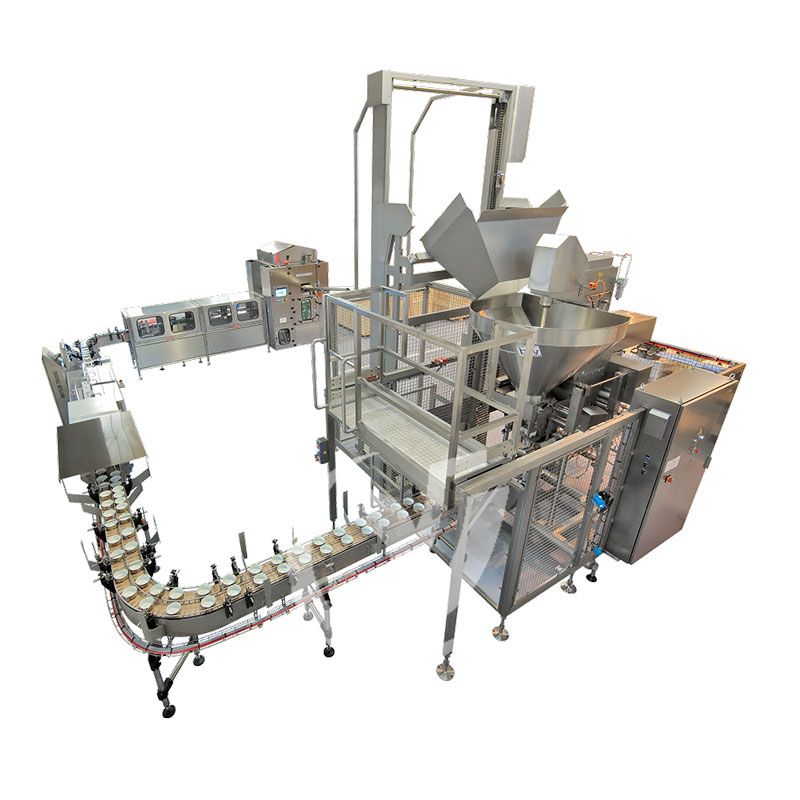


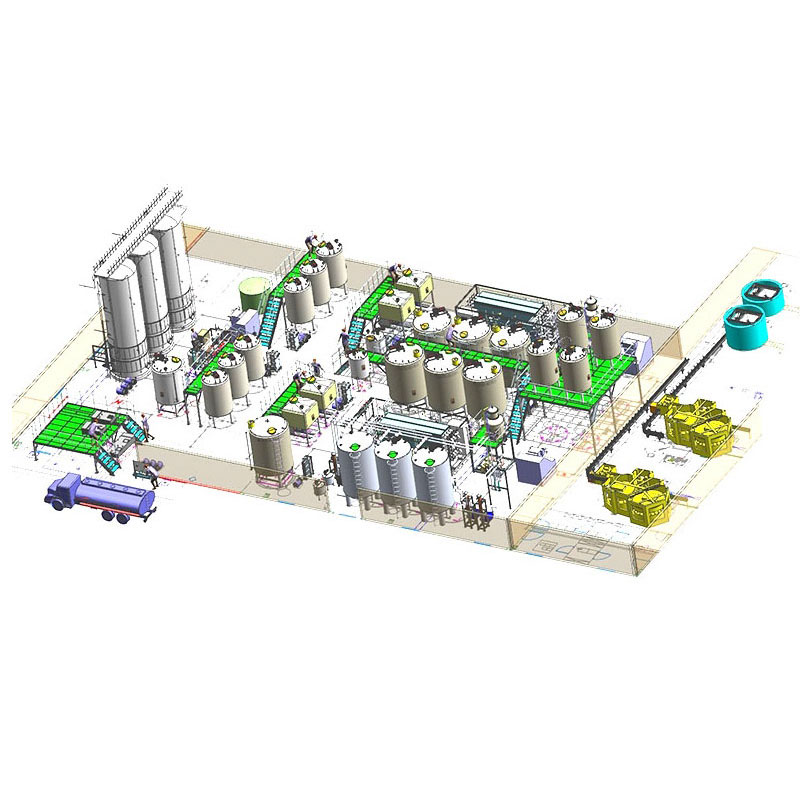


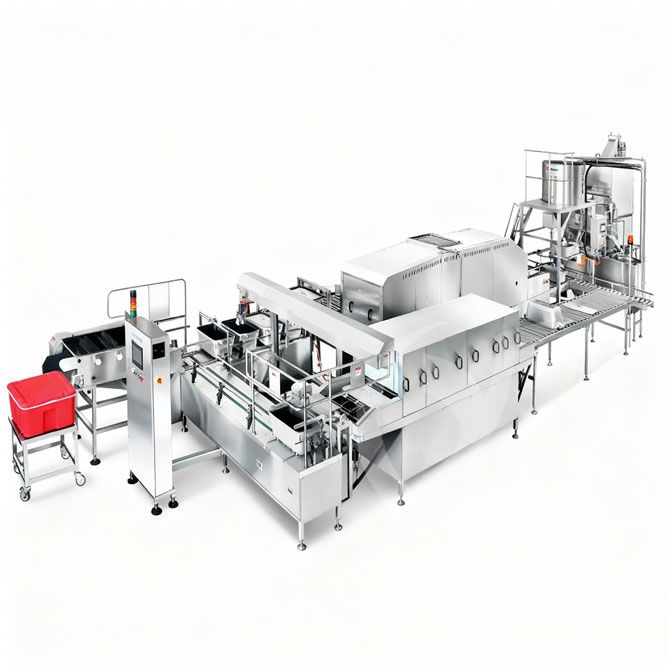
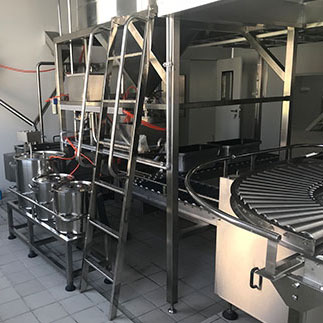 Cold Chain Rice Production Line
Cold Chain Rice Production Line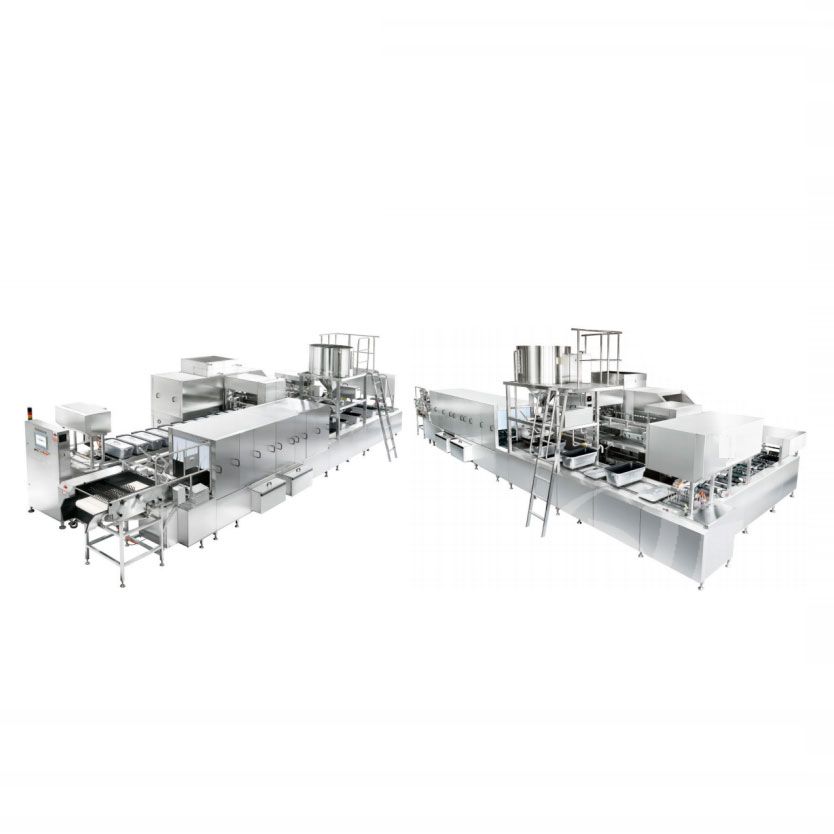 Unmanned Intelligent Rice Production Line
Unmanned Intelligent Rice Production Line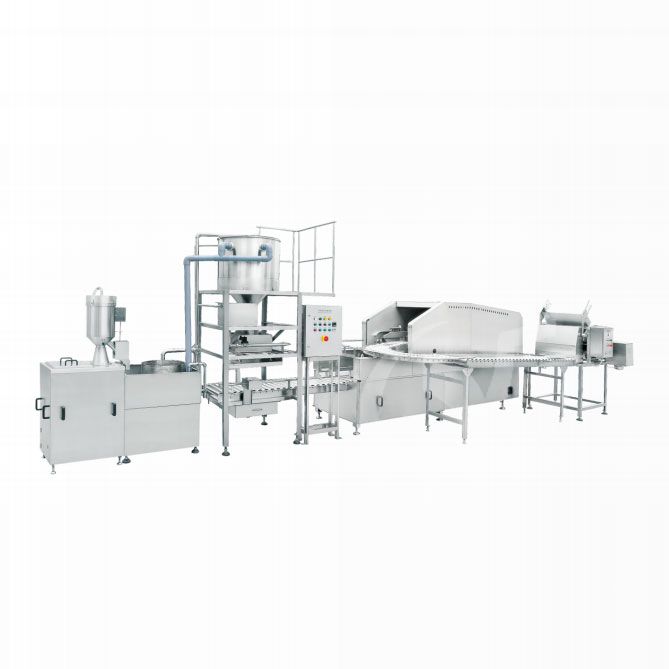 Automatic Rice Production Line
Automatic Rice Production Line
Ready to Get Started?